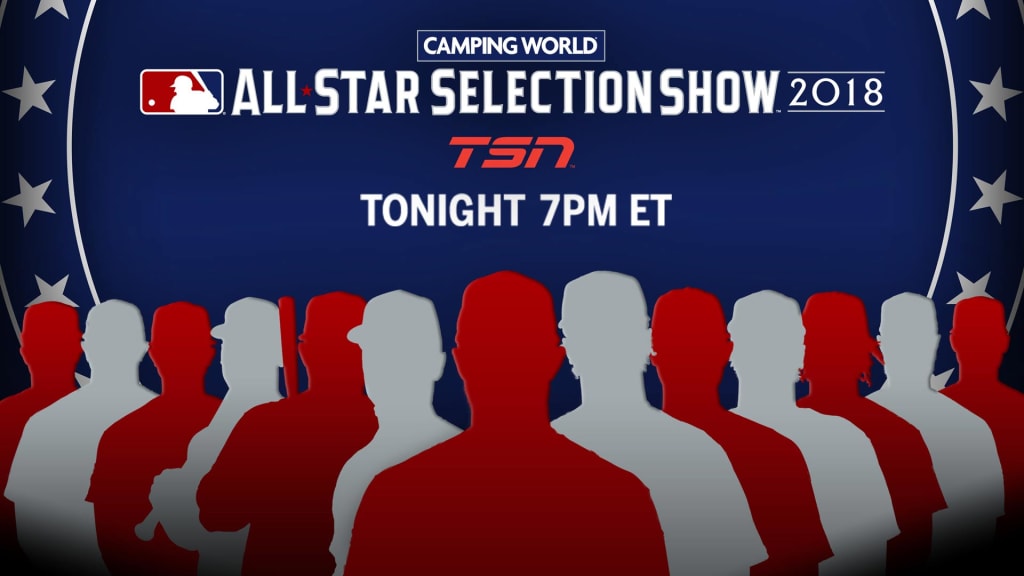
The votes are in, and so now we wait for the official unveiling of the American League and National League rosters for the 2018 All-Star Game presented by Mastercard tonight. In the meantime, a little refresher on how these squads are selected is in order.
As always, fans voted for the starting position players via the 2018 Camping World MLB All-Star Ballot. But the selection process for pitcher and reserve spots changed in the Collective Bargaining Agreement that took effect last year. Not only was the connection between the Midsummer Classic and home-field advantage in the World Series eliminated, but roster sizes were reduced. So here's a handy FAQ to guide you through the particulars of the selection process.
• All-Star Game coverage
How many spots have to be filled?
The NL has 24 spots, while the AL has 23. The difference, of course, is that fans vote in a starting designated hitter for the AL team. There are 32 total roster spots for each league, as opposed to the previous total of 34. There will be 20 position players and 12 pitchers per side, whereas last year's 34-man rosters had a 13-pitcher minimum.
Who picks the reserves and pitchers?
In short, it's a group effort. The player ballot, the Commissioner's Office and the fans all have a say in how the rosters rounded out. The new wrinkle this year is that the NL and AL skippers (in this case, Dave Roberts and AJ Hinch) no longer have a say in the selections, so there won't be accusations of homerism.
How many player ballot selections are there?
The ballots gathered in all 30 clubhouses shortly before the roster announcements account for 16 players in the NL and 17 in the AL -- eight pitchers (five starters and three relievers), as well as one backup for each position (including DH in the AL).
What if the players selected a guy already voted into the starting lineup by the fans?
Next man up. The guy who was second on the player ballot at that particular position is selected as the backup. This doesn't change the number of player ballot selections. The player ballot is basically used as a pecking order to fill the backup slot at each position.
How many MLB selections are there?
The Commissioner's Office is responsible for selecting seven NL players (four pitchers and three position players) and five AL players (four pitchers and one position player). At this stage, MLB must ensure that every club is represented by at least one All-Star selection.
What about the fans?
You guys aren't done yet. You'll fill the 32nd and final spot on each roster via the Final Vote ballot. It will feature five position players as candidates (again, selected by MLB) from each league.
Does every team have to be represented?
Yes, and it is the job of the Commissioner's Office to ensure this stipulation is accounted for with those selections.
It should be noted, however, that if a player is selected to the roster and can't participate for a particular reason, he does not necessarily have to replaced by a teammate.
How is the starting pitcher for each team determined?
By the league managers. See, they still have some say in this process! The announcement is made the day before the game.
Who picks the replacements for injured players or those who decline to participate?
If an elected starter is going to be unable to play, the reserve who received the most votes on the player ballot at that particular position moves into the starting lineup. The roster replacement is then chosen by the league.
If a player-elected reserve position player must be replaced, the next in line on the player ballot becomes a reserve. Once the top three finishers on the player ballot at a given position are covered, then it becomes a selection by the Commissioner's Office.
Does an injured or otherwise unavailable player have to be replaced by a player from the same position?
Not necessarily. Pitchers will be replaced by pitchers. But on the position-player front, we've seen situations like infielders replacing outfielders and vice versa.
Are starters who pitch the Sunday (July 15) before the game allowed to participate?
Initially, Sunday starters were deemed ineligible. Then, they were allowed to make the decision themselves (albeit limited to a single inning if they opted to play). Now, clubs or players are allowed to make requests for usage accommodation if there are factors (such as a DL stint, recent surgery, innings workload or other reasons) that would affect the pitcher's availability. If an accommodation is granted, then the parties will agree upon the pitcher's status and workload availability.
So how many total All-Stars are we talking about here?
Even with the reduced roster sizes that went into effect last year, we still ended up with 71 total All-Stars (after an average of 79 in the five years prior to the reduction) due to injury and scheduling replacements. So try not to get too worked up about "snubs" when the initial rosters are announced, because things will evolve in the lead-up to the game.
What if a selected player gets traded to a team in the opposite league before the All-Star Game?
This happened to Jeff Samardzija in 2014, when the Cubs dealt him to the A's. In such a scenario, the player is deemed ineligible to participate in the game but is still recognized as an All-Star for the original league. In Samardzija's case, he wore a generic NL jersey and All-Star Game cap for the pregame player introductions.